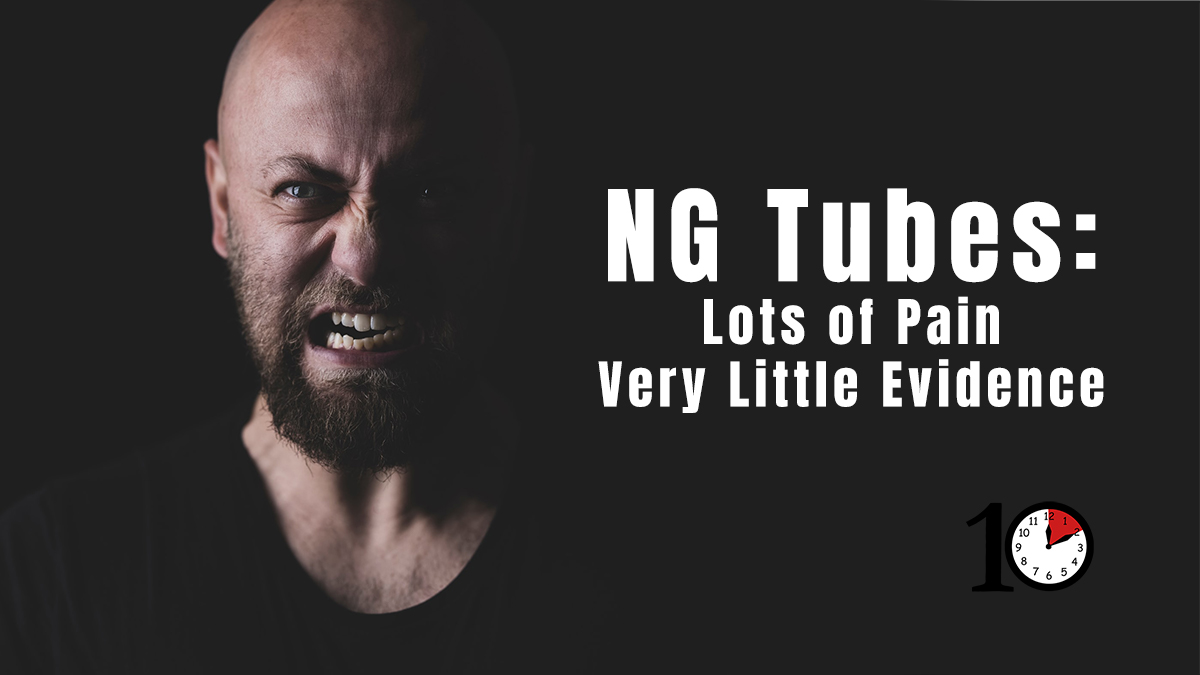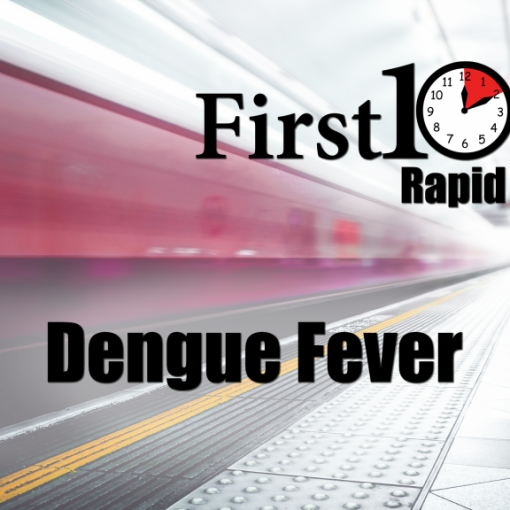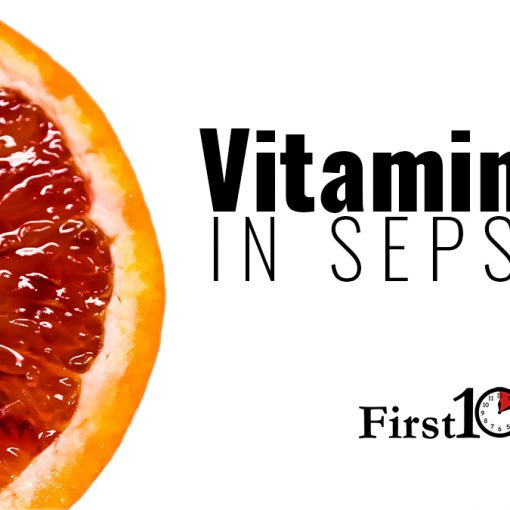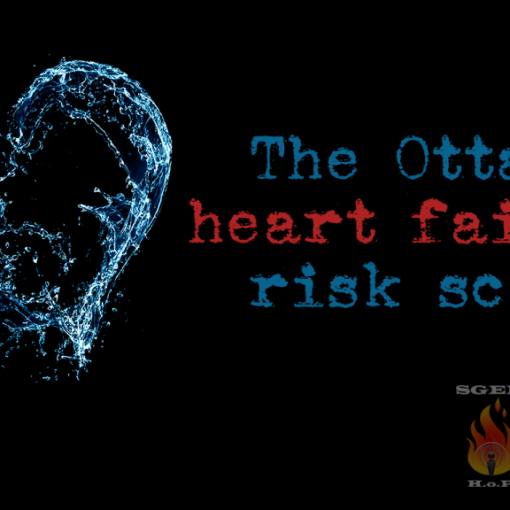Morgenstern, J. NG tubes for small bowel obstruction: More pain than evidence, First10EM, August 2, 2021. Available at:
https://doi.org/10.51684/FIRS.80588
In my mind, the use of NG tubes for bowel obstruction is an anachronism. I grew up hearing about literature that said NG tubes provide no benefit, but are routinely rated as among the most painful things we do to our patients. In my mind, this was a classic example of a medical myth that had been relegated to the history of medicine, side by side with things like leeches and trephination. However, every time I admit a patient with a bowel obstruction, the issue of NG tubes is raised, so I guess we need a quick blog post.
Like many historical medical practices, the NG was adopted well before the era of evidence based medicine. Its use was based on common sense, and some pathophysiology, but not evidence. Unfortunately, time and again in medicine common sense and physiology have led us astray.
There is no evidence that NG tubes help
The use of NG tubes to decompress the stomach in small bowel obstruction seems to have originated with Dr. Owen Wangensteen. Over the course of a couple of decades of research into bowel obstruction, the mortality rate at Massachusetts General Hospital fell from around 45% in 1920 to approximately 20% by the end of the 1930s. Although both the diagnosis and surgical management changed dramatically over the decades, this decrease in mortality, publicized through case series, was the evidence that promoted widespread use of NG tubes. (Edlich 1996) Obviously, by modern standards, a case series in which many changes were made over many decades, from an era in which CT was unavailable and mortality was dramatically higher, does not count as a very high standard of evidence. At best, this is hypothesis generating.
Unfortunately, as far as I can tell, this hypothesis has never actually been tested. There is not a single randomized trial of any size or quality that addresses this issue. All we have is observational data (and the observational data from the modern era appears to conflict with the Wangensteen case series).
There are some major limitations to observational data, because patients who receive NG tubes are likely different from those who are treated without, but the available observational data does not support a benefit from NG tube use. In one chart review of 290 patients admitted with small bowel obstructions, about 20% were managed without an NG tube. The use of an NG tube was associated with worse outcomes across the board: longer time to resolution, longer length of stay, and a higher complication rate. Non-operative management was successful in 2/3rds of the patients, and was the same whether or not an NG was placed. Of note, almost 2/3rds of the patients who had an NG placed had minimal drainage, indicating the procedure could not possibly help the majority of patients. (Fonseca 2013)
The Best Evidence Topic Reports (Best BETs) series covered this topic in 2014, and the only relevant paper that they identified was the Fonseca 2013 observational study. Their bottom line: “There is no scientific evidence for the routine use of nasogastric tubes in adults with small bowel occlusion.” (Paradis 2014)
Another retrospective chart review included 181 patients with small bowel obstruction, half of whom were treated with nasogastric decompression. There was no association between NG tube use and death, surgery, or bowel resection. NG tube decompression was associated with a longer hospital stay (median 5 versus 3 days, p<0.0001). There were significant baseline differences between the groups – NG tubes were used more often in elderly patients, and those with malignancy – which again severely limits the value of observational data. (Berman 2017)
Although somewhat tangential, prophylactic NG tubes have long been used to promote earlier return of normal bowel function in the context of ileus after surgery. However, a systematic review of 28 studies including 4000 patients found the exact opposite (ileus resolved faster in patients without an NG tube), and concludes “routine nasogastric decompression does not accomplish any of its intended goals and so should be abandoned in favour of selective use of the nasogastric tube.” (Nelson 2005)
So to summarize this: we have absolutely no idea if NG tubes help. There is just no quality evidence. The observational data actually suggests harm in longer hospital stays, longer time to resolution, and more complications, but the data is so weak it shouldn’t be trusted. We just don’t know. Some patients may benefit, but the observational data suggests NG tubes should not be used routinely.
On the other hand, NG tubes clearly cause harm
NG tubes are very painful. They are routinely rated as among the very worst things that we do to patients.
In a classic survey of admitted adult patients who had undergone various medical procedures, the NG tube rated at the very top of the list, with an average pain score of 8.8 on a 10 point scale, putting it ahead of mechanical ventilation (8.0), central line placement (6.5), arterial lines (3.4), and foley catheters (6.2). (Morrison 1998) Although the numbers in the study are imperfect, and there are a number of potential biases, when patients tell us they are in pain, we should listen. Numerous other studies have confirmed that this is a very painful procedure. (eg. Singer 1999; Cullen 2004)
It is possible to limit the pain associated with NG placement using topical lidocaine, although it is unclear how long the analgesic effect will persist, as these tubes are generally left in place for many days. (Kuo 2010) Nasal pain is not the only problem with NG tubes. Patients rate the discomfort from gagging at least as highly as the nasal pain from insertion. (Singer 1999) Furthermore, the pain is not completely eliminated, which means that harm will still outweigh benefit if there are no benefits.
98% of emergency physicians believe that NG tube insertion is painful, but only 28% believe the analgesic options they provide are effective, and more than half were dissatisfied with their current practice. (Juhl 2005) This probably explains why emergency physicians have been more rapid to change their practice around this medical myth than the many others in which we do not immediately see the harms of our actions (such as stress testing or PPIs in GI bleeds).
NG use in other conditions
NGs have historically been used for numerous other conditions in emergency medicine, from assessing upper GI bleeds to administering activated charcoal. I won’t do an in depth review into the evidence for these other ‘indications’, in large part because there really isn’t any evidence.
I think we all know that the NG tube is inaccurate for the diagnosis of upper GI bleeds. I will occasionally use an NG tube as a monitor of active bleeding in critically ill patients, but the evidence suggests routine NG tubes in upper GI bleeds is unhelpful. (Huang 2011; Palamidessi 2010)
I had never even heard that the NG tube might be helpful in pancreatitis, but apparently that is a widely held belief in some parts of the world. Again, the evidence seems to suggest the exact opposite, with more rapid recovery in patients randomized to no NG tube. (Sarr 1986)
The NG is occasionally an useful route for medication administration, and even hydration, but the risks need to be balanced against the benefits. Too often, it has been used for medications which themselves have no proven benefit (such as charcoal), which only compounds the lack of benefit from the NG tube itself. However, I am happy to place an NG tube if it is the only way to administer a potentially life saving medication, such as aspirin administration in an unconscious STEMI patient. (Of course, the harms of NG tubes are also negligible in unconscious patients.)
The NG has been touted as a possible alternative to IV for rehydration in pediatrics, but considering the pain from an NG tube is rated as much higher than the pain from an IV, it seems like the NG would be the worse alternative in the vast majority of cases.
For the most part, I think the role of the NG tube is incredibly limited in emergency medicine. We have to recognize it’s significant harm, being one the the most painful procedures we perform on patients. In that light, there is a high burden of proof on those suggesting the practice. We need to see evidence of benefit before we subject our patients to this procedure.
Bottom Line
This is clearly a harmful procedure. Patients consider it more painful than almost anything else we do in medicine. That harm means that we must have evidence of benefit before we can consider this practice ethical. At this point, there is no evidence, and therefore NG tubes absolutely should not be placed routinely in patients with small bowel obstructions.
That conclusion doesn’t mean that NG tubes don’t provide any benefit. Evidence on the topic is essentially non-existent. We just don’t know. But we know the tubes cause harm, and therefore the burden of proof lies without those who want to subject patients to that harm. Before NG tubes are used, we must demonstrate that there is a benefit that outweighs the known harm. If NG tubes are as important as surgeons seem to think – if there is a huge absolute benefit – then it should be very easy to demonstrate that benefit in an RCT. However, until we see that RCT, it is unfair to patients to subject them to this unproven, painful procedure.
Other FOAMed
Evidence based medicine is easy
Evidence based medicine resources
EP Monthly: I Hereby Declare the End of the Reflexive NG Tube
EP Monthly: The NG Tube for GI Bleed: Cruel and Unusual Punishment
EP Monthly: NG Tube Pain Avoidable but Not Avoided
References
Berman DJ, Ijaz H, Alkhunaizi M, Kulie PE, Vaziri K, Richards LM, Meltzer AC. Nasogastric decompression not associated with a reduction in surgery or bowel ischemia for acute small bowel obstruction. Am J Emerg Med. 2017 Dec;35(12):1919-1921. doi: 10.1016/j.ajem.2017.08.029. Epub 2017 Aug 15. PMID: 28912083
Cullen L, Taylor D, Taylor S, Chu K. Nebulized lidocaine decreases the discomfort of nasogastric tube insertion: a randomized, double-blind trial. Ann Emerg Med. 2004 Aug;44(2):131-7. doi: 10.1016/j.annemergmed.2004.03.033. PMID: 15278085
Edlich RF, Woods JA. Wangensteen’s transformation of the treatment of intestinal obstruction from empiric craft to scientific discipline. J Emerg Med. 1997 Mar-Apr;15(2):235-41. doi: 10.1016/s0736-4679(96)00351-4. PMID: 9144067
Fonseca AL, Schuster KM, Maung AA, Kaplan LJ, Davis KA. Routine nasogastric decompression in small bowel obstruction: is it really necessary? Am Surg. 2013 Apr;79(4):422-8. PMID: 23574854
Huang ES, Karsan S, Kanwal F, Singh I, Makhani M, Spiegel BM. Impact of nasogastric lavage on outcomes in acute GI bleeding. Gastrointest Endosc. 2011 Nov;74(5):971-80. doi: 10.1016/j.gie.2011.04.045. Epub 2011 Jul 7. PMID: 21737077
Juhl GA, Conners GP. Emergency physicians’ practices and attitudes regarding procedural anaesthesia for nasogastric tube insertion. Emerg Med J. 2005 Apr;22(4):243-5. doi: 10.1136/emj.2004.015602. PMID: 15788820
Kuo YW, Yen M, Fetzer S, Lee JD. Reducing the pain of nasogastric tube intubation with nebulized and atomized lidocaine: a systematic review and meta-analysis. J Pain Symptom Manage. 2010 Oct;40(4):613-20. doi: 10.1016/j.jpainsymman.2010.01.025. Epub 2010 Aug 3. PMID: 20678892
Morrison RS, Ahronheim JC, Morrison GR, Darling E, Baskin SA, Morris J, Choi C, Meier DE. Pain and discomfort associated with common hospital procedures and experiences. J Pain Symptom Manage. 1998 Feb;15(2):91-101. PMID: 9494307
Nelson R, Tse B, Edwards S. Systematic review of prophylactic nasogastric decompression after abdominal operations. Br J Surg. 2005 Jun;92(6):673-80. doi: 10.1002/bjs.5090. PMID: 15912492
Palamidessi N, Sinert R, Falzon L, Zehtabchi S. Nasogastric aspiration and lavage in emergency department patients with hematochezia or melena without hematemesis. Acad Emerg Med. 2010 Feb;17(2):126-32. doi: 10.1111/j.1553-2712.2009.00609.x. PMID: 20370741
Paradis M. Towards evidence-based emergency medicine: Best BETs from the Manchester Royal Infirmary. BET 1: Is routine nasogastric decompression indicated in small bowel occlusion? Emerg Med J. 2014 Mar;31(3):248-9. doi: 10.1136/emermed-2014-203617.1. PMID: 24532357
Sarr MG, Sanfey H, Cameron JL. Prospective, randomized trial of nasogastric suction in patients with acute pancreatitis. Surgery. 1986 Sep;100(3):500-4. PMID: 3526610
Singer AJ, Konia N. Comparison of topical anesthetics and vasoconstrictors vs lubricants prior to nasogastric intubation: a randomized, controlled trial. Acad Emerg Med. 1999 Mar;6(3):184-90. doi: 10.1111/j.1553-2712.1999.tb00153.x. PMID: 10192668
Witting MD. “You wanna do what?!” Modern indications for nasogastric intubation. J Emerg Med. 2007 Jul;33(1):61-4. doi: 10.1016/j.jemermed.2007.02.017. Epub 2007 May 30. PMID: 17630077
Photo by engin akyurt on Unsplash






18 thoughts on “NG tubes for small bowel obstruction: More pain than evidence”
What about the role of lowering chances for aspiration in RSI?
That is a topic I have not researched. I didn’t come across any data when researching for this post, and I have never seen data that shows a benefit, but there is a much more direct physiologic tie to immense harm in airway management, so a benefit is more believable to me. That being said, we know the whole concept of keeping patients ‘nil by mouth’ before sedation or surgery is incorrect, so that might argue against emptying the stomach artificially.
Can you give me a link for the whole NPO before sedation/surgery is incorrect, I’d like to read up on that.
Thanks in advance
David V
Some of the evidence covered here:
https://first10em.com/npo-for-sedation/
I remember my first patient as a PGY-1 in the ER with a mechanic small bowel obstruction. 81 yo, male, intestinal adenocarcinoma (I found out later). I saw the distended stomach on POCUS but did not place an NG tube, and my senior resident did not want to either. Surgery wanted a CT-abdomen and when the patient was moved from the bed to the CT tray, he vomited about a gallon of liquid stool, choked on it, and died.
You’re right, there is no evidence for routine use, and so we have to make the decision individually. It’s just an anecdote, and the patient had a poor prognosis from the start, but to this day I wish I had placed an NG tube, because maybe he wouldn’t have died so terribly.
Thanks for sharing
These anecdotes are powerful, and definitely shouldn’t be ignored, but anecdotes do have a way of distorting truth. (We only share the worst stories. I have seen hundreds of patients with bowel obstructions, and have never seen anything like that. But we don’t talk about their days of suffering from the NG tube, probably because it’s mostly invisible to us.) That being said, there basically is no evidence here, so one shouldn’t have too strong an opinion in either direction.
In all of EBM, judgement needs to be applied. Even if NGs should not be the routine, they may have occasional value.
I absolutely agree.
Thanks for the post!
Thanks for your post! Besides one sentence I’m completely with you. Try Aspirin iv in that STEMI and you don’t have to use an NG either.
Aspirin IV is not available in any country I’ve worked in
we use rectal aspirin in this circumstance
Also an option here.. but I worry about reliability of absorption rectally. If the patient is unconscious, the downsides of a NG are close to zero, so I still like it is an option.
What a shame – in Germany it is available and widely used. It even is part of our STEMI guidelines, I therefore use quite regularly in the prehospital as well as in the ED setting.
It always introgued me of that painful intervention was that necessary, and now I am more convinced that it is not.
Did you read something about incoercible vomiting or about NG in palliative care? Two situations where I see it a lot and always doubt if that pain and potential harm is necessary.
One day you could do a full review like the one in thrombolysis and tranexamic acid.
Thank you!
https://expertwitness.substack.com/p/intubation-fiasco-bowel-obstruction
People are being sued for not placing NGTs – without eveidence
Well in this case my opinion is that it is a completely different issue! The article above descibes lacking evidence for NG placement in conservative management…and I absolutely agree that the patients can do fine without it.
RSI in SBO is always a high risk situation and I personally will keep rating the patients life over comfort if I can already tell by ultrasound the stomach is full (it usually is).
And if a Anaesthesie patient starts vomiting before his airway is secured it usually results in massive aspiration, sepsis, long ICU stay and/or death.
And I do not know for sure but I suppose this is the reasons there are and will not be any RCTs about this because no ethical committee will comply with the idea of exposing half of the patients to the risk of a most likely fatal aspiration…and that is not a rare thing in SBO!
I think risk adapted management by experienced practitioners is the answer. Not because “we always did it like that” but because patient safety has to be the primary issue.
Can anyone point specifically to which article had the survey data on patient rated discomfort? The Pongprasobchai 2007 article appears to just evaluate efficacy of Lidocaine administrations. Appreciate anyone who can confirm which article has this information. Thanks
Thanks for catching that. Not sure how I messed up the citations – but the correct paper is Morrison 1998, and is now cited